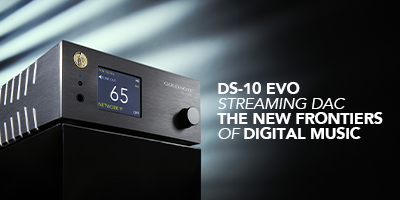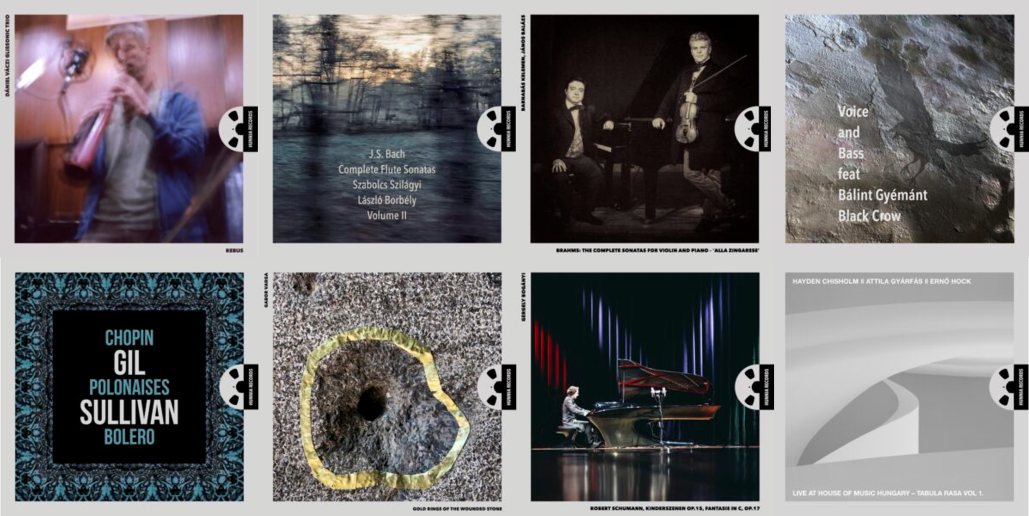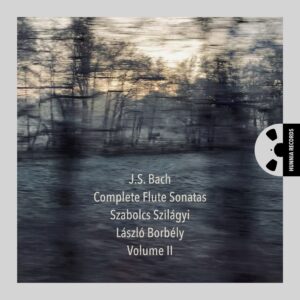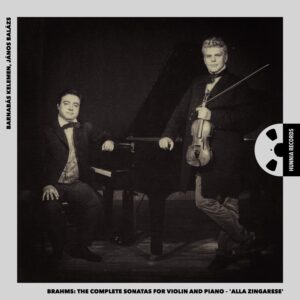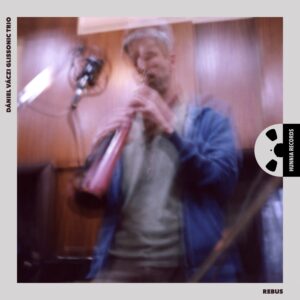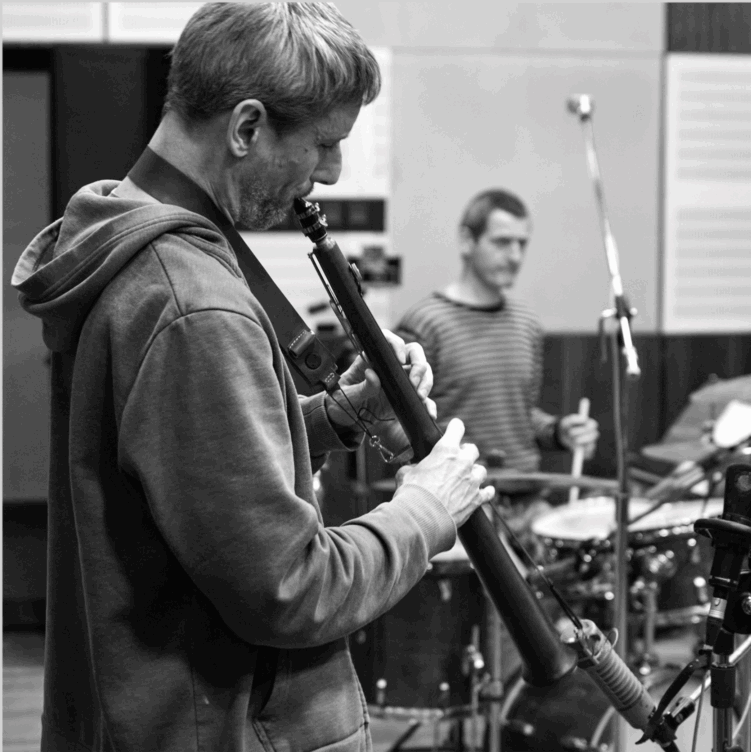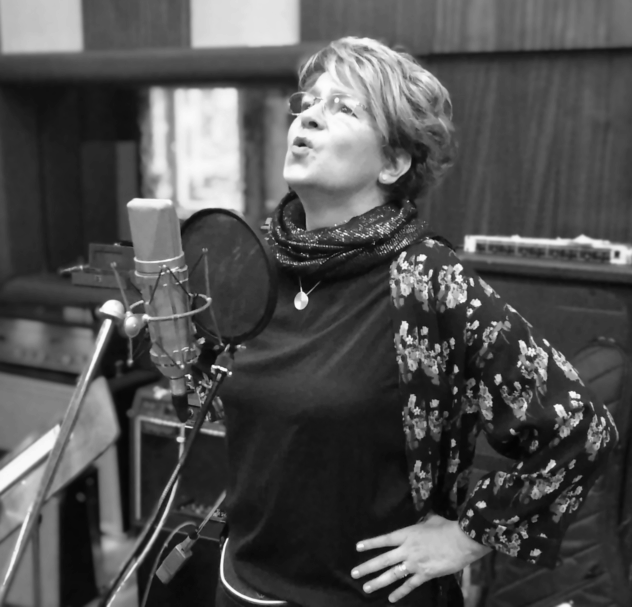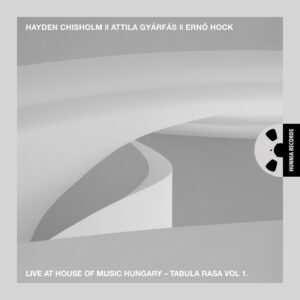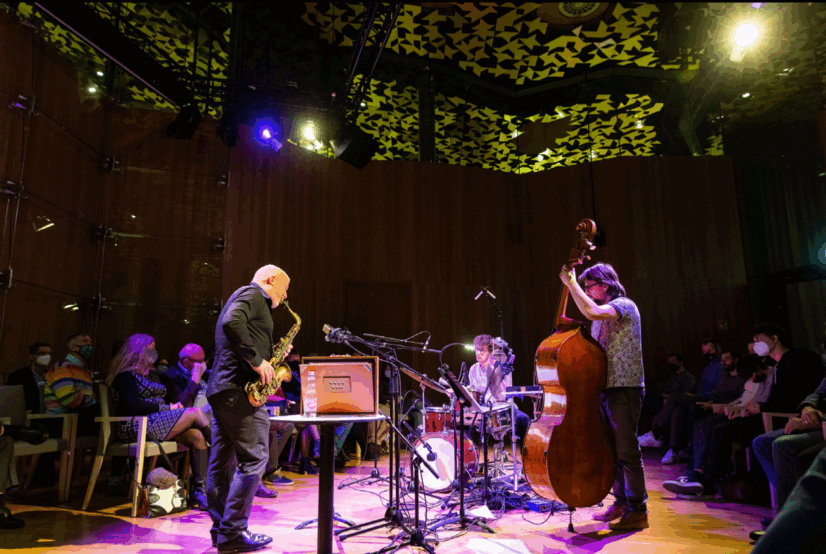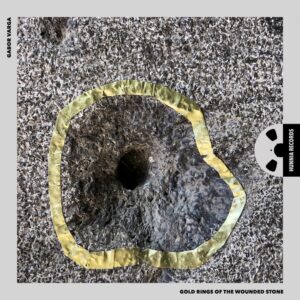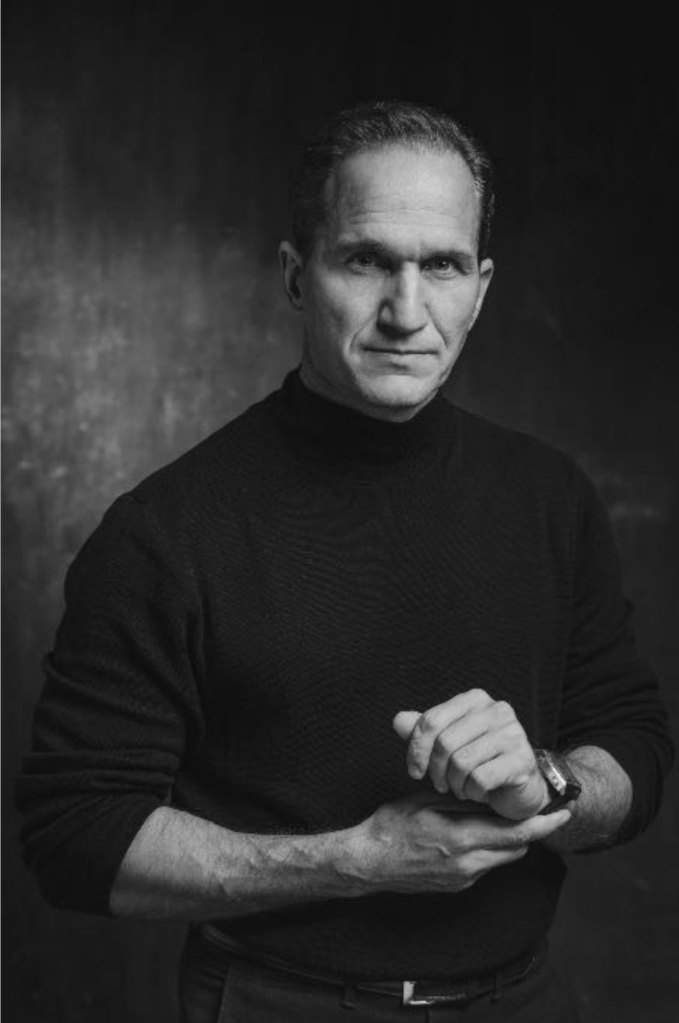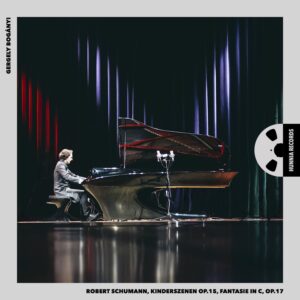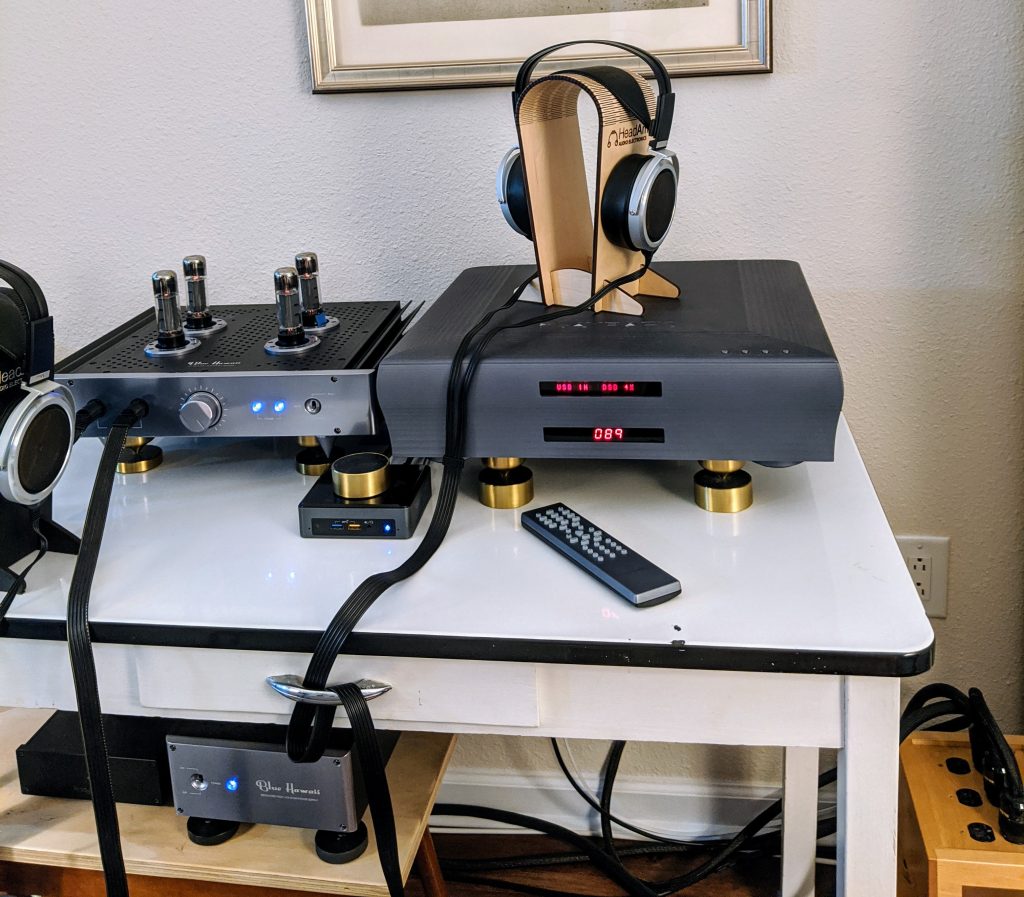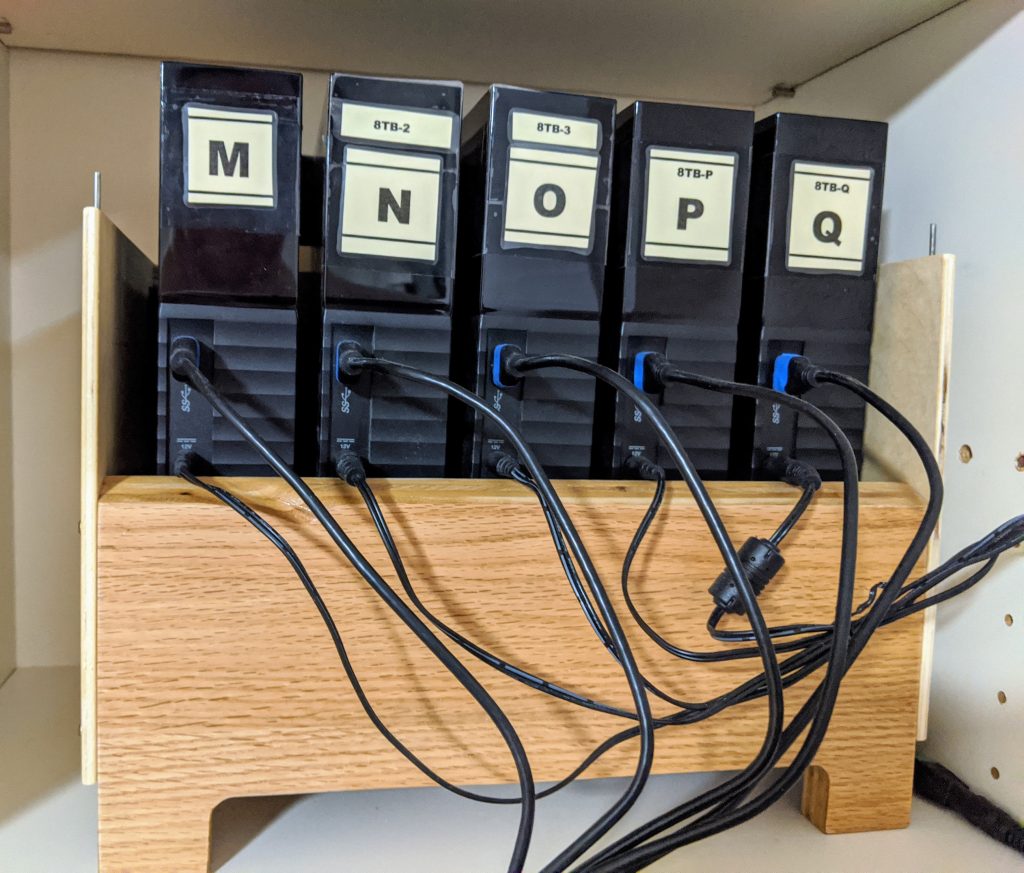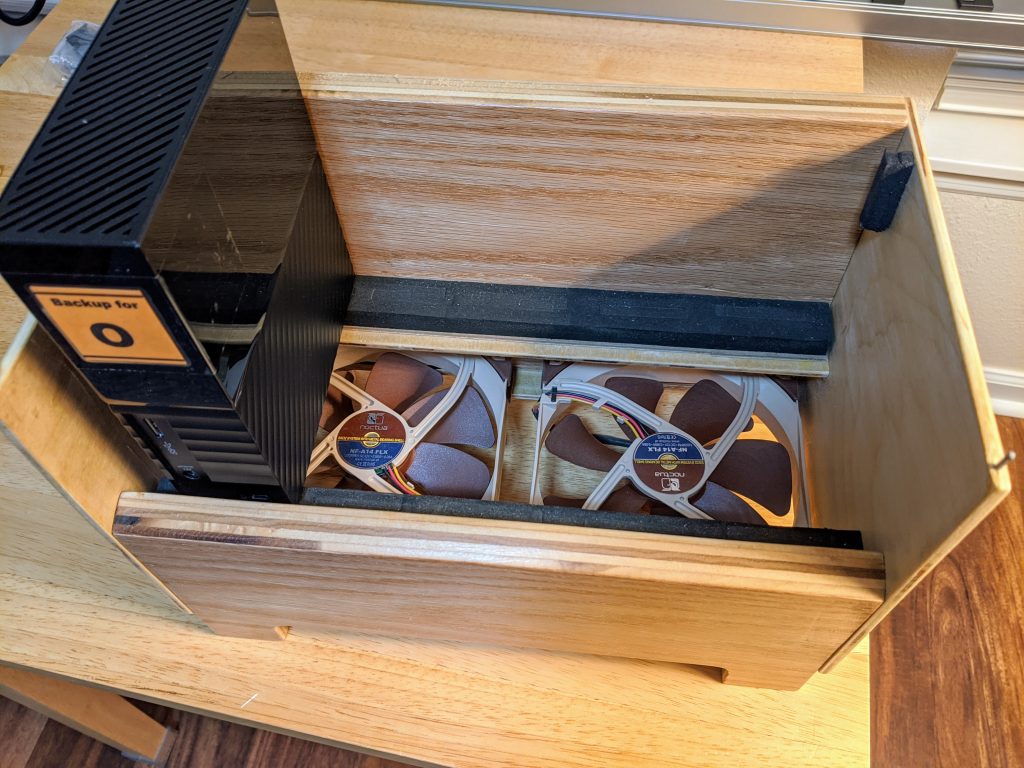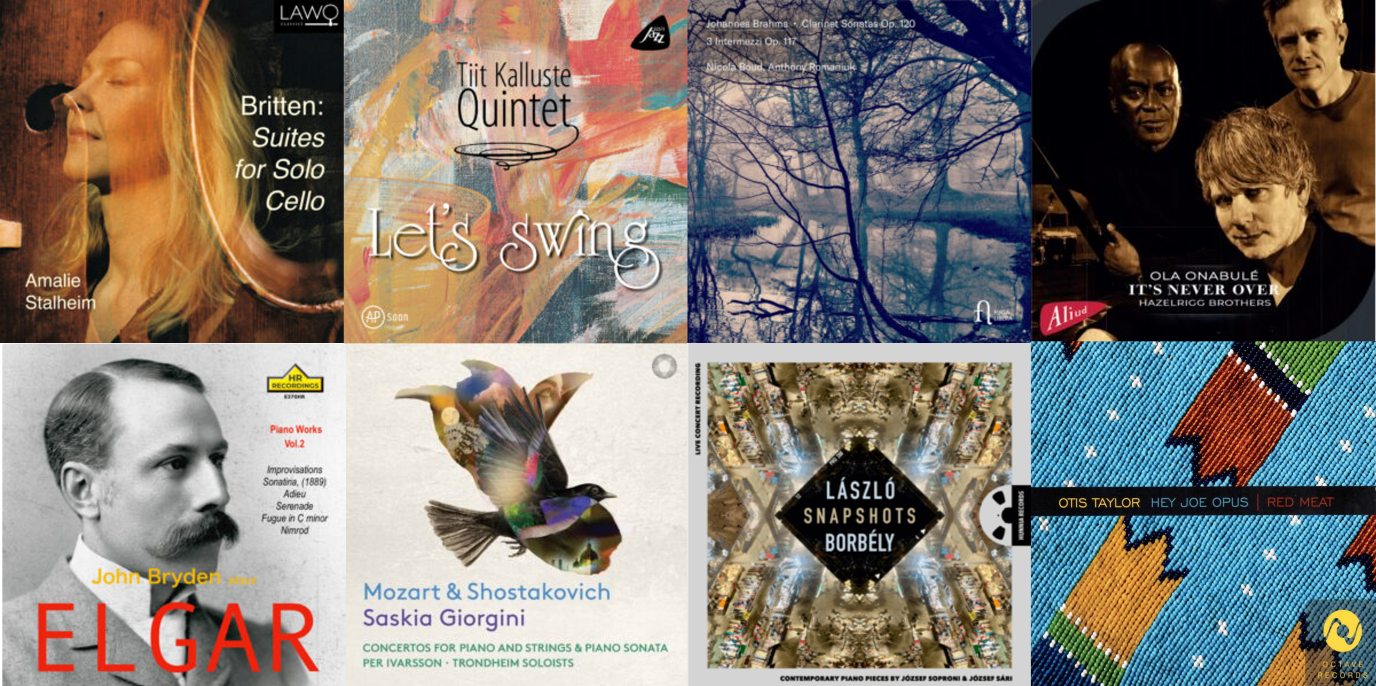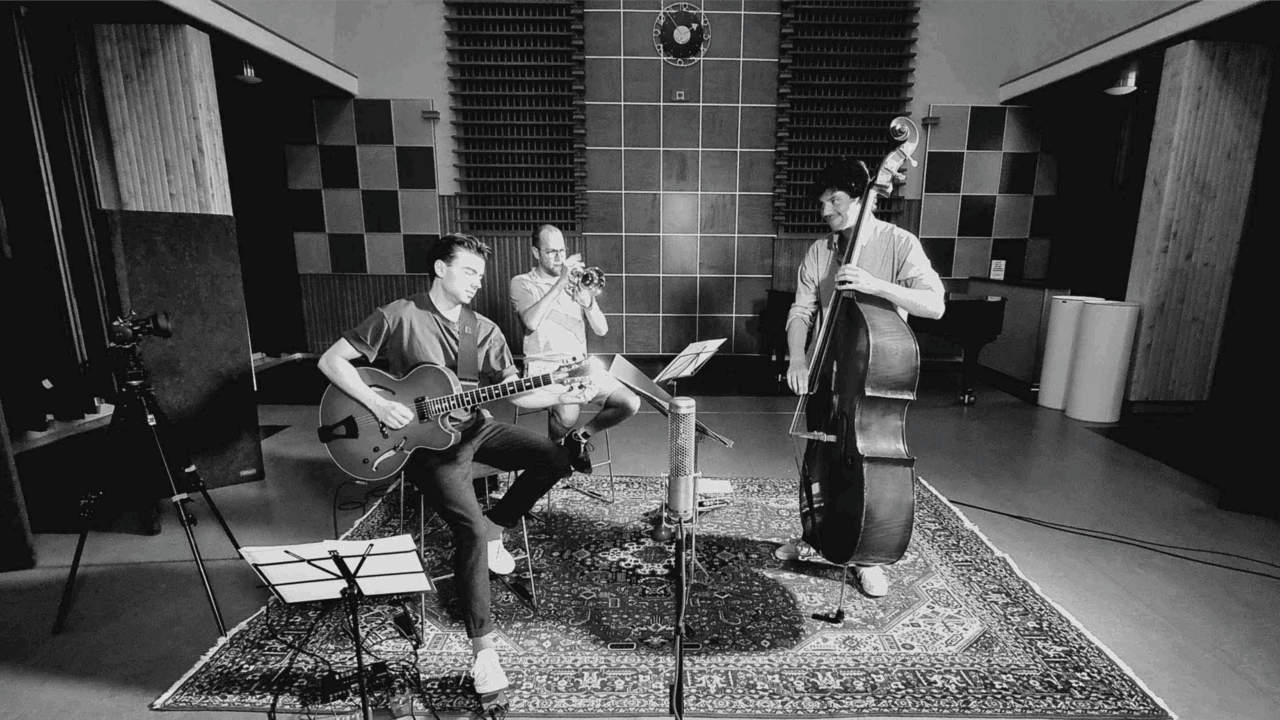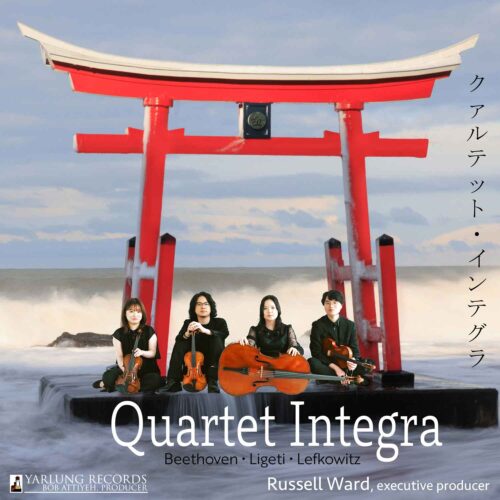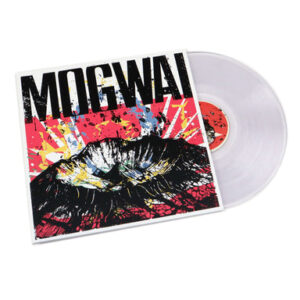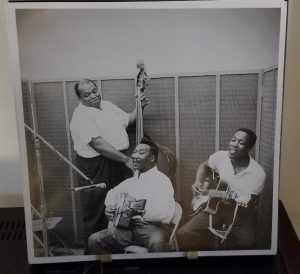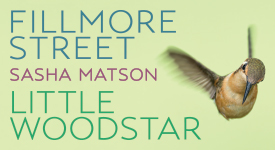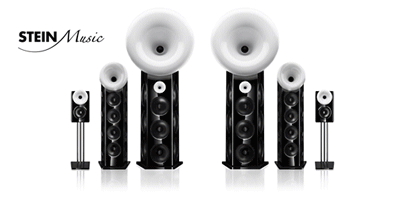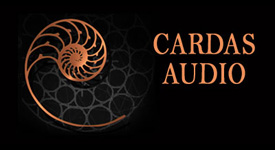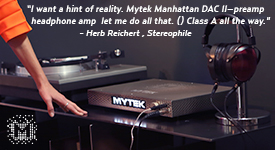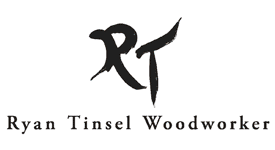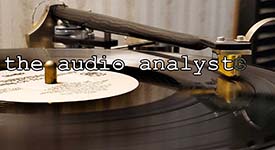You will likely have noticed a large number of recordings in my articles from Hunnia Records. The owner of the label, Robert Zoltán Hunka, loves all kinds of music and is fanatically committed to making recordings with the highest sound quality he is able to achieve. Their albums keep showing up for three good reasons: the artists are very good, the recordings are nigh on phenomenal, and the variety of music and musicians is as great as one might find from major recording labels multiple times their size. So the sound quality? Oh indeed, yes. The sound quality has gotten better and better over the past six years that I've been collecting them. For the past several years, they have been releasing in Pure DSD256* with a transparency of sound that is superb.
So, this article is a bit of a "catch up" on some of the Hunnia albums I've not yet talked about. Hope you enjoy and find something to explore.
J.S. Bach, Complete Flute Sonatas, Volume II, László Borbély, Szabolcs Szilagyi. Hunnia Records 2025 (Pure DSD256, Stereo) Edit Master Sourced HERE
With this release of Volume II, flutist Szabolcs Szilagyi and pianist László Borbély complete their planned cycle of the Bach Flute Sonatas. And such a successful second volume this is! I reviewed enthusiastically Volume 1 in Issue 129, about which you can read HERE. This second volume is even better.
What's better? Well, first this new Volume II is recorded in Pure DSD256 with no PCM in the process. Volume I was recording in DXD. This doesn't make an overwhelming difference, but it does make a audible difference both in the purity of the timbre of the instruments and the transparency of the overall sound. (I'm listening to both in their DSD256 iterations for comparison.) Second, recording engineer Sándor Árok seems to have moved the microphones a bit farther back from Szilagyi's flute, allowing it's harmonics just a bit more time to develop ahead of the microphones. Overall, just a bit more pleasing natural acoustic and timbre. And, I could just be making all this up in my mind as I listen back and forth between the two volumes—both are so good!
Szilagyi and Borbély perform on modern instruments. In the liner notes for Volume II, Szabolcs Szilagyi makes some very interesting observations about the evolution of both the piano and the flute since Bach's day, which I quote in full:
"The flute sonatas of J.S. Bach occupy a special place in the record market. The recordings concentrate almost exclusively on the hybrid, modern flute and harpsichord (continuo) instrumental combination, with the exception of course of recordings on historical flutes. There is a certain contradiction here, since flutists rarely get to try out this instrumental combination during their studies.
"There are perhaps no two instruments in the history of music that have undergone as many technical changes in the 19th century as the flute and the piano. The tonal range, articulation and dynamic variety of these two instruments have changed over the entire register range to an extent that was unimaginable in Bach's time. At the same time, however, the musical community later adopted both the modern flute and the modern piano to interpret Baroque music.
"In the 19th century, the piano became the most dominant instrument in concert life and the 'crowned king' of the stage. The flute, on the other hand, because of its imperfection, was degraded to one of the most notorious wind instruments of the same period. No major concert works were written after the Mozart concertos. For the flute, survival was in the hands of the fanatics of the symphony orchestra and the dilettante movements, which were spatially separated in Europe. The change was later brought about by Theobald Böhm's patent of 1847, but it was still decades before Debussy opened a new chapter in music history with his symphonic poem Afternoon of a Faun, bringing the modern flute into focus within the symphony orchestra.
"In contrast to the extremely fragile, sensitive sound of the lyrical baroque flute, the dramatic character of the modern flute offers a much more rational alternative.
"So how should a performer playing modern instruments approach Bach's sonatas, since his instruments offer him completely different possibilities than the instruments of Bach's time. While respecting the composer's intentions to the utmost, the performer also wants to exploit the potential of modern instruments. Nevertheless, Bach's highly sophisticated musical language is no small test for modern instrumentalists.
"This series is nothing less than an immense challenge, with the noblest of intentions, to nurture the legacy of the greatest musical genius in a dimension that is no longer accessible to him."
In sum, this is a set of Bach's flute sonatas that is exceptionally well performed, very nicely recorded, and highly recommended!
Brahms: The Complete Sonatas For Violin and Piano – 'alla zingarese', Barnabas Kelemen, Janos Balazs. Hunnia 2023 (Pure DSD256, Stereo) Edit Master Sourced HERE
Recorded live before a very quiet, appreciative audience at Kodály Centre, Pécs, Hungary, April 28, 2023, this is a rather remarkable set of performances. They capture an interpretative flair not often heard in other recordings of these works. These performances have a spirit of spontaneity to them, a willingness to modify tempo for expressive purposes, an addition of some gypsy flair (reflecting music Brahms appreciated so greatly as reflected in his Hungarian Dances among other pieces). The tagline in the album title, "alla zingarese" ("in the Gypsy fashion"), reflects this intention. And, while the flair is not overt, it is delightfully present in the freedom with which Kelemen and Balazs caress this music as they invite us to enjoy these works along with them.
At a little over 2-hours, this is a value-packed album of great music. I've been playing it a section at a time over the past couple of weeks. And today with no one else at home, I sat down with the album for the entire recital—and that was just wonderful. A cup of coffee to one hand, headphones on, surrounding noises shut out since I was all on my own, the music just enveloped me and intrigued as it moved from movement to movement and from piece to piece.
Beautifully performed, beautifully recorded, highly recommended. If you enjoy Brahms, here you will experience the warm intimate side to his person. Not the monolith, but the caring, expressive human in a recording of exceptional merit.
Rebus, Dániel Váczi Glissonic Trio. Hunnia Records 2020 (Pure DSD256, Stereo) Edit Master Sourced HERE
It's always a pleasure getting my mind opened up to different, unique sounds. I've had this album sitting in my "to play" pile for some time, but always found something more familiar to put ahead of it. Today became THE day to listen to this album, and what a nice surprise.
Dániel Váczi presents a new type of instrument. One that glides and slides, making sounds that are different and perhaps quite unique. He applies a continuously variable magnetic ribbon across a slot that extends the full length of the sound tube of what would otherwise be a reed instrument with fingerholes. But here, instead of fingerholes, he has that slot, the two sides of which are covered with magnetic foil which attract a magnetized ribbon on top. The ribbon is fixed on the upper end, stretched and lifted up from the lower end as a string on a violin. You can push down the ribbon anywhere, it will seal up perfectly above it, so you can produce any note in the pitch continuum. It can be played with eight fingers of the two hands or by sliding one finger up and down. And, since there is a slide from note to note, it is a glissando technique in play.
He calls this a glissonic system, combining the words "glissando" and "sonic," that can be used on all kinds of wind instruments: flute, whistle, clarinet, saxophone, oboe etc. The first model being played here is the glissotar, based on the Hungarian tarogato, which is a single-reed instrument with a conical wooden body.
Part of the appeal is the foundation in the traditional Hungarian tarogato reed instrument. That immediately puts me in mind of the medieval bombard and its very unique sound. Now add the ability to play any note and to slide between notes, and then take a experimental-jazz mindset and sympathetic collaborators on percussion and piano, and we have here a very nice experimental jazz recording with a very different sound.
Dániel Váczi playing his glissotar in recording session.
Black Crow, Ágnes Lakatos and Tibor Csuhaj-Barna, with Balint Gyemant (guitar). Hunnia Records 2020 (Pure DSD256, Stereo) Edit Master Sourced HERE
Ágnes Lakatos (vocals) and Tibor Csuhaj-Barna (double bass) have performed together as a voice and bass duo for over 30-years. They have been a significant part of the European jazz scene all that time though both their performances and their teaching. On this album, they invited guitarist Balint Gyemant to join them on selected tracks.
Lakatos brings her own distinctive voice and style to the songs on this album. From Billie Holiday's "God Bless the Child" to Joni Mitchell's "Black Crow" to Gershwin's "Summertime," Lakatos makes these songs uniquely her own. Her ability to break into scat is excellently competent—nothing forced, she just flows. And it all sounds delightfully natural, as in Of Course, this is what should follow...
Tibor Csuhaj-Barna's plucked double bass is a perfect complement—anticipating, supporting, breaking off on it's own path—his playing naturally blends with Lakatos yet stands as an independent but completely aligned voice in these songs.
I've not heard Balint Gyemant (guitar) before this album, but his addition seems well aligned to their overall conception, particularly in Lakatos' interpretation of "Black Crow."
Still, the key draw here is the Lakatos and Csuhaj-Barna duo, complementing each other, meshing seamlessly, as they bring their special blend of voice and bass to this album. It is readily apparent why they have been a significant force in the jazz scene for all this time.
I wrote previously about Ágnes Lakatos' excellent album Soaring in Issue 124, which you can read HERE. In that album she is accompanied by pianist Kalman Olah. In future articles, I'll probably write more about other Lakatos albums, every one of which I find most engaging. I wait in hope of new releases. You will find the recordings she has made for Hunnia Records HERE.
Ágnes Lakatos
Chopin Polonaises & Bolero, Gil Sullivan. Hunnia Records 2024 (Pure DSD256, Stereo) Edit Master Sourced HERE
Pianist Gil Sullivan writes, "I have been playing most of these Polonaises and the Bolero for as long as 55 years. I have included them many, many times in recital programs all over the world these past 40 years, including Carnegie Hall in both my performances there." And his intimate familiarity with these pieces rewards the listener to this album with superb performances.
I've written before, most enthusiastically, about Sullivan's cycle of the complete Mozart Piano Sonatas in his albums: Hidden Voices: Mozart Piano Sonatas Volume (Volumes I-VI) for Hunnia Records HERE. And, as much as I've enjoyed those performances of Mozart, I think Gil Sullivan is even more attuned to the music of Chopin. His playing style seems a perfect match to this music: direct, somewhat muscular, yet caressingly beautiful where called upon. His is the way with these works that I have always hoped to hear.
Yes, there are other excellent performances of these works. The list goes on and on with recordings by Martha Argerich, Vladimir Horowitz, and Samson Francois running at the top of my personal list. So, I'm not ascribing any "best" accolades here. What I am saying is that Sullivan's performances resonate with me—very strongly.
Included are some of the best known polonaises: the "Military" Polonaise in A, Op. 40, No. 1, the "Tragic" Polonaise in F-Sharp Major, Op. 44, and the "Héroïque" Polonaise in A-Flat Major, Op. 53. One of the nice features of this selection from Chopin's more than 23 Polonaises is it's demonstrative variety. From the two Op.26 Polonaises (1834/5) through to Op.53 (1842), we watch them grow in nobility, majesty, and originality. And upon reaching Op.53, in his "late period," we are presented with what many consider his most perfect, rapturous, and sublime work for solo piano, the "Héroïque" Polonaise in A-Flat Major.
Don't freak out—this last piece on the album is not Ravel's Bolero transcribed for piano. Far from it. Chopin's Bolero, despite the ostensibly Spanish flavor of the piece, has been described as a polonaise in disguise, or a "boléro à la polonaise" because its rhythms seem more reflective of Poland than anything Spanish. It was written five years before Chopin first visited Spain in 1838 and was inspired by Chopin's friendship with the French soprano Pauline Viardot, whose father, the famed Spanish tenor Manuel García, had introduced boleros to Paris by the time of Chopin's arrival there.
Performed on a Steinway Model D Concert Grand piano and recorded in Hunnia's ProVibe Studio A, in November 2024, the recording is a pure Pure DSD256 release. Like all Hunnia releases, the sound is clean, transparent, open, and with full frequency response. Recording engineer Sándor Árok is just nailing the sound of this Steinway Model D Concert Grand piano, allowing the full harmonics to develop in the large (but not concert hall size) space of Studio A. The balance of direct and reflected sound is just very, very nicely managed. Kudos!
Live at House of Music Hungary, Tabula Rasa Vol 1, Hayden Chisholm, Attila Gyárfás, Erno Hock. Hunnia Records 2022 (Pure DSD256, Stereo) Edit Master Sourced HERE
A bit of a magical experience... The recording is of a live performance with an utterly silent audience. It starts with the sound of sruti box** with its continuous soft drone, then a solo saxophone enters, and gradually double bass and percussion begin to contribute. The music is ethereal, it has a subtle soft glow. And then slides seamlessly into a tune on saxophone based clearly in western jazz. The mood stays subdued, subtle, as percussion and bass begin fleshing out the sounds in the room.
When I first began to play this album, I'd not read the liner notes and really did not know what to expect. Definitely not my normal listening material. But how wonderful! Wonderful to find something different with a jewel-like luminance that sucks you in, that surrounds you, that immerses in a new conversation.
Reading the liner notes, I find that this performance resulted from an almost impromptu opportunity for three musicians to come together to play in the newly christened House of Music Hungary. Saxophonist Hayden Chisholm writes that, when approached, "it was an opportunity I did not want to miss. Perhaps one of the many beautiful things about jazz is that musicians who have never met before can instantaneously create something special on their first encounter and this was certainly the case last March in Budapest."
Hayden Chisholm is a New Zealand saxophonist and composer originally from New Plymouth, New Zealand. Ernő Hock studied double bass at the jazz department of the Liszt Ferenc Academy of Music in Budapest. Attila Gyárfás is a drummer and composer primarily focusing on free improvisation and on researching the tonal possibilities of the drum set. All three seem completely comfortable freely improvising with just a wee a bit of advance planning.
Chisholm explains that after a short afternoon rehearsal (first time together) they selected a mix of songs, old and new, to be played that evening. All of which "we treated in a very open and playful way."
And thus, delightful. Highly recommended.
Recorded live before an audience at House of Music Hungary in Budapest on March 1, 2022.
** Sruti box (or sruti box, shrutibox, srutibox): originating from the Indian subcontinent, a small instrument with bellows that when hand-pumped produces a continuous drone sound, similar to a harmonium. It has transferred from traditional Indian classical music around the world being adopted as an accompaniment in a variety of musical styles.
Gold Rings of the Wounded Stone, Gabor Varga. Hunnia Records 2022 (Pure DSD256, Stereo) Edit Master Sourced HERE
When a musician of immense talent and creative vision begins to play, the world stops to listen. So it is with Gabor Varga's intensely involving solo piano performance on Gold Rings of the Wounded Stone. It is an hour and a half of pure improvisation—highly personal, totally engaging. Recorded before a live audience, without interruption, without edits, this is a joy to hear. Hunnia calls it "Live to Stereo, Pure DSD256" and it is a aural, emotional, and mental treat.
Varga writes, "Gold Rings of the Wounded Stone is an entirely improvised solo album. Every single track is an impression of the given moment. It does not contain any composed pieces. Of course, this latter statement is hard to believe for some, as some of the pieces have a strikingly well-developed structure. I do not know if it sounds disillusioning or comforting when I tell you that I could never manage to play the same music again."
And the music here is highly personal. From the opening Song for My Mother, performed just two months following her death, to pieces to which he gives titles such as Freedom, Hope, Sadness, Hungarian Kids Are Playing, Sunrise, these pieces are personal expressions of what these various things mean to him. For nearly an hour and a half of continuous improvisation, one might think the music might become repetitive—it does not. Varga innovates throughout this recital with fresh ideas, fresh constructions, and with a constant variety of sounds.
He says, "I am only sure of one thing—that what I wanted to say, you are listening to now. And if your heart and ears are at the right place, you will understand what time, hope, sadness, joy, Hungary, Budapest and so many more things mean to me. And wherever in the world you listen to this music, you can experience the most fantastic thing about music—that it does not matter where we were born and what fate we carry, our ears and hearts hear and feel the same."
What a gift! So beautifully created, and created with such heartfelt intention of goodwill.
For quite a number of years now, the music of Gabor Varga has found a special place in my listening enjoyment. As I've continued to listen to his recordings, whether with a group or solo, as here, I find myself drawn into his music making, to his musical language, to his aesthetic. His is music of great depth, great intelligence, great understanding, and great communicative power. He is a musician whose recordings are well worthy of exploration. There is much to enjoy, much to intrigue, much to savor.
Another factor in this recording is the instrument—so much so that it get's co-artist billing in the liner notes. This is the Gergely Boganyi B-292 Grand Piano, a new piano design with unique capabilities and a different sound than we are used to hearing with other concert grand pianos. It is hugely dynamic, with tremendous resonance, and an ability to extend the length of notes that seems surreal. Varga has said, "The length of notes and the quality of key depression were opening up brand new horizons for me. This piano has a matchless capacity for translating the manual abilities of the pianist into sounds. As if you’ve changed your common car to a thousand-horsepower superb sports car. Its dynamism and sensitivity are fascinating."
I encourage you to compare the sound of this piano used as heard in this performance by Gabor Varga to that of the classical music of Robert Schumann performed in the next album below by pianist and piano designer Gergely Bogányi. The opportunity to compare the sound of the same piano used to perform two distinctly different genre of music and played by two distinctly different pianists if of interest itself. When you add that these albums were recorded in the same Studio A, by the same recording engineer, using the same microphones, within one week of each other in July 2021, and both released in Pure DSD256, the listening comparison rises to downright impossible to resist. Quite a nice comparison. I recommend the adventure.
The Bogányi Piano. An new and unusual design using carbon fiber and innovative design elements. It has a very unique sound, as suggested by Varga's comments quoted above.
Schumann: Kinderszenen Op.15, Fantasie in C, Op.17, Gergely Bogányi. Hunnia Records 2022 (Pure DSD256, Stereo) Edit Master Sourced HERE
Hungarian pianist Gergely Bogányi (b. 1974) plays with prodigious technique coupled with almost infinite finesse. His performances tease out nuances that others seem often to slide over. Too dramatic? Too romantic? I don't know. I'm not a music critic. What I do know is that I mentally engage with his performances like I do with only a few other classical pianists. His playing often seems to me almost improvisational as he searches for just the right combinations of inflection and tempo in a piece. The Schumann Kinderszenen ("Scenes from Childhood") are a great example of what I hear in his performances: a search for just the right expression, just the perfect nuance, to tell the story of the music.
Bogányi writes that he is often seeking to tell a story in his performances, and particularly so in the piano works of Robert Schumann. "Compared with other composers, these are the least possible pieces of music to rehearse. Let's take the example of a rehearsal at home, when I manage to execute a particular detail well. One is then filled with joy and satisfaction and the desire to be able to play it again and again in the same way. However, to my great regret, if I try to play the same part again, I never succeed as well. It somehow 'slips through my fingers' even if I play the notes themselves in the same way. So the secret must lie behind the notes. More precisely, in the content, the message, the message behind the sounds. And this has to do with storytelling, because if you interrupt a story and repeat only part of it, you run the risk of suddenly breaking, snapping, losing the particular spiritual thread that guides the attention of the performer and the listener."
It is this search for the message, the storytelling, that makes these performances memorable. And special.
Some say the Kinderszenen are the easiest and most approachable of Schumann's mature works, but still extremely difficult. I'm not a pianist, so I can't envision what might be more challenging than these works. As I listen, I can not imagine being able to play these pieces. But I can enjoy their performance by someone as skilled as Bogányi, and I can savor the distinctive, and subtle, touch he brings to his interpretations. Vladimir Horowitz, Martha Argerich, and David Fung (recently reviewed HERE) all have marvelous recordings of Kinderszenen and I love them. Bogányi brings similar excellence yet with a different touch, a different feel to the storytelling of the music, and a distinctly different piano sound (see below).
Bogányi adds to this album performances of three of Schumann's Fantasies, Op. 17. And a nicely complimentary set of works they are because they are very different than the Kinderszenen—more intense, more powerful. And similarly well played.
Highly recommended!
The piano used in this recording is the Gergely Boganyi B-292 Grand Piano, as heard in the Gabor Varga's solo piano album reviewed above, Gold Rings of the Wounded Stone. This time played by the designer himself. Hearing this piano used to perform two distinctly different genre of music and played by two distinctly different pianists if of interest itself. When you add that these albums were recorded in the same Studio A, by the same recording engineer, using the same microphones, within one week of each other in July 2021, and both released in Pure DSD256, the listening comparison rises to downright impossible to resist. Quite a nice comparison. I recommend the adventure. (Yes, I know... I duplicated this paragraph to make sure you didn't miss your opportunity if you're only reading for jazz recordings or only reading for classical performances!)
All photos courtesy of Hunnia Records.
* Pure DSD256 for Hunnia Records is most commonly what we might categorized as DSD Pure Analog. Microphone channels are tracked in DSD256, then converted to analog for mixing and any sweetening, and then converted from the analog mixer back to DSD256 as the final edit master. No PCM in the recording or mixing process.

